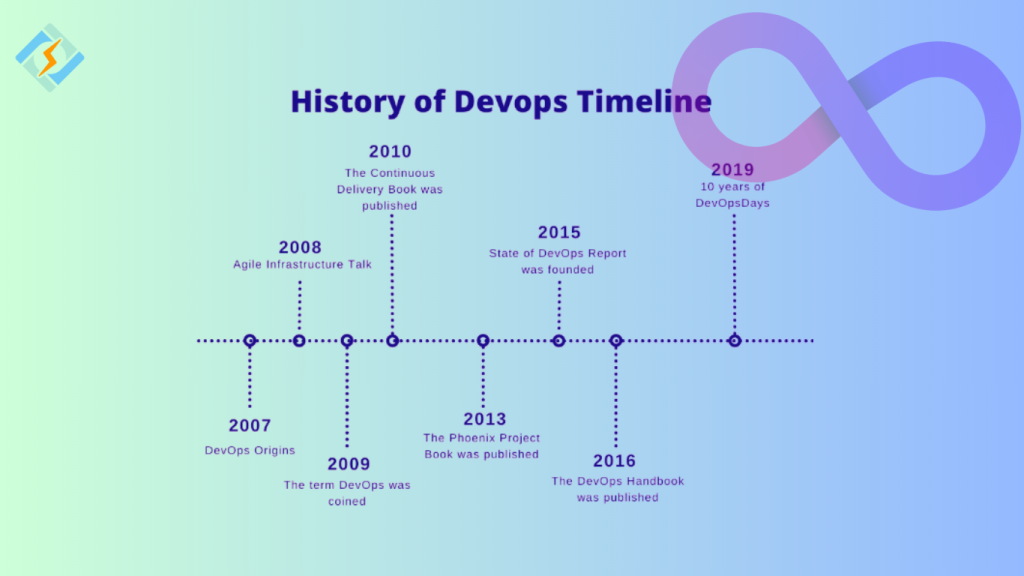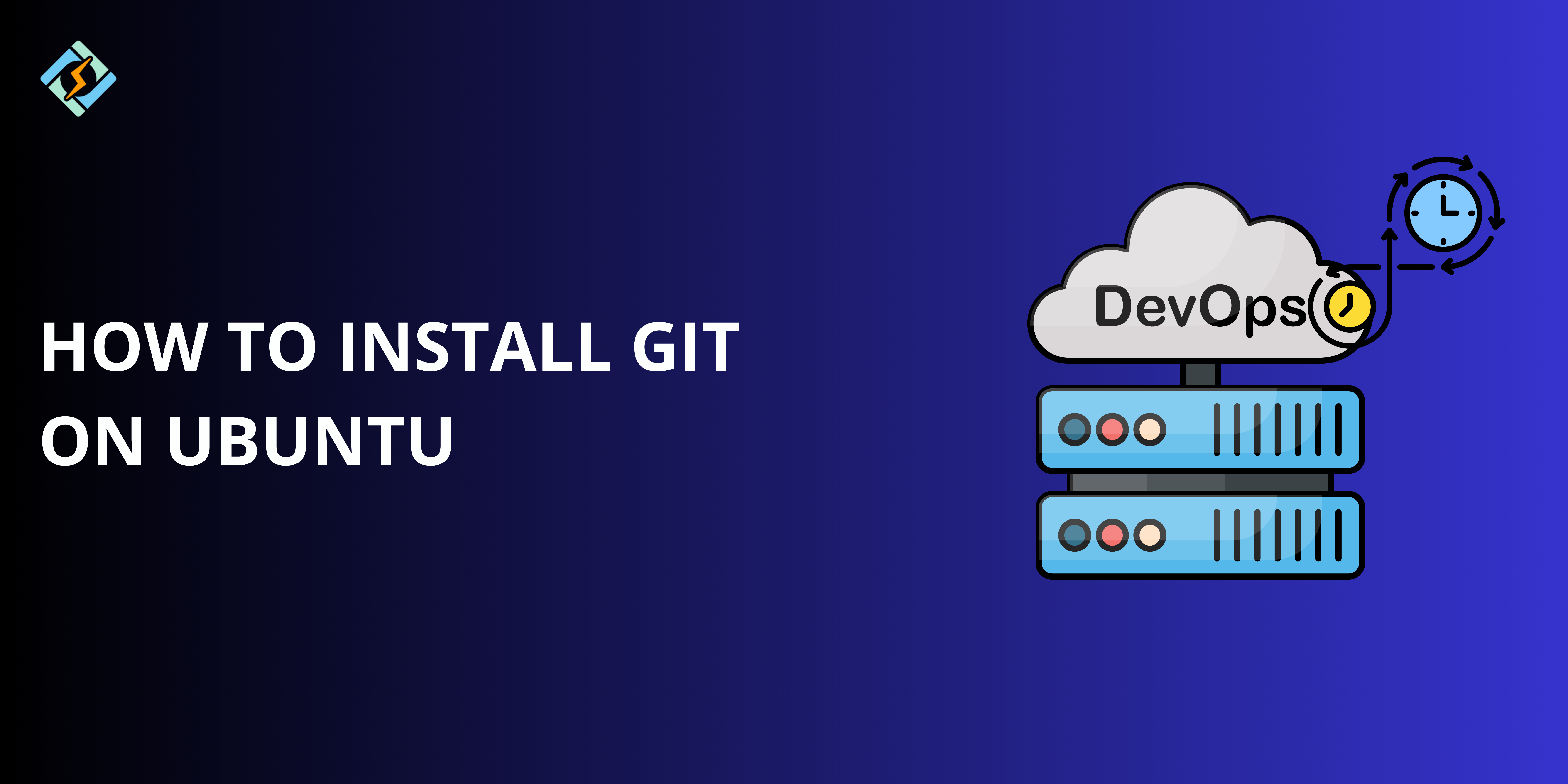Let’s take a trip down memory lane and explore the history of DevOps and how it evolved from a simple idea into a groundbreaking methodology.
Have you ever thought about how DevOps became such a dominant force in the tech world? It might seem like DevOps has always been a part of modern software development, but that’s not quite true. The journey of DevOps is filled with experimentation and innovation.
Not too long ago, developers and IT operations teams worked separately, leading to inefficiencies, delays, and a nightmare when it came to deployments. Software releases could drag on for months or even years. Then came the game-changer: DevOps.
The history of DevOps started from its modest beginnings in the late 2000s, DevOps has transformed into a standard practice in the industry, completely changing the way we build and deploy software. If you’re interested in exploring the brief history of DevOps or looking for resources like a history of DevOps PPT or pdf, this guide has got you covered.
The History of DevOps

Pre-DevOps era: Traditional software development & IT operations
Before the advent of DevOps, development, and operations functioned as distinct parts of the application release cycle. The developers focused on coding, while the operations team was responsible for deploying that code into the production environment. This separation often created friction between the objectives of the developers and those of the operations team.
Developers aimed for frequent updates, whereas operations prioritized system stability. The lack of a well-defined handoff process for applications led to misunderstandings, inefficiencies, and delays in releases. This disconnect persisted even after the initial launch, harming company morale and fostering a culture of blame between the two teams.
Get exclusive access to all things tech-savvy, and be the first to receive
the latest updates directly in your inbox.
Pre-2007: A Perfect Storm of Events
Before 2007, a combination of factors came together that ultimately led to the development of what we now call DevOps.
Lean manufacturing was already a well-known set of best practices in the manufacturing world, often associated with the “Toyota Manufacturing Method.” This approach focuses on optimizing processes throughout the production line. (Fun fact: Toyota’s leaders drew inspiration from the innovative assembly line techniques pioneered by Ford Motor Company.) The core principle of lean manufacturing is “continuous improvement,” where practitioners consistently look for ways to:
- Keep inventory levels low. Lean manufacturing emphasizes having minimal stock on hand, which includes both raw materials and finished products waiting to be shipped or assigned to orders.
- Reduce order backlogs. Ideally, incoming orders should transition directly into fulfillment. A crucial metric in lean manufacturing is the “order to ship” time.
- Enhance efficiency in the production process. This involves re-engineering processes and improving automation to produce goods as quickly as possible. Each step in the operation (like cutting, welding, assembling, testing, etc.) is scrutinized for inefficiencies.
In the IT sector, traditional waterfall development methods were starting to be replaced by faster, iterative approaches like agile. The focus was on “speed,” even if it sometimes meant sacrificing quality for quicker development and deployment. On the operations and infrastructure front, Cloud Computing was gaining traction, particularly with services like infrastructure as a service (IaaS) and platform as a service (PaaS) becoming more established.
Lastly, a new wave of tools known as “continuous integration (CI)” tools began to surface. The concept of CI tools was introduced by Grady Brooch back in 1991 through his Brooch Method.
The Early Days of DevOps (2007 onwards-2010s)
In 2007, Belgian consultant Patrick Debois grew frustrated with the disconnect between application development and operations teams during data center migrations. He aimed to find a more effective way to handle these processes, which led to the establishment of the Agile Systems Administrator group on Google.
In 2009, Flickr employees John Allspaw and Paul Hammond advocated for a more integrated approach to application development and operations, which resulted in the birth of DevOps. Inspired by their presentation, Debois organized the first Devopsdays conference in Belgium.
By 2010, DevOps had made its way to the United States, with over 30 conferences planned for 2018.
In 2013, the book “The Phoenix Project” by Gene Kim, Kevin Behr, and George Spafford brought the DevOps concept to the forefront of the IT industry. These milestones were pivotal in shaping the history of DevOps and modern IT practices.
DevOps Movement: Crucial Findings
By 2015, Dr. Nicole Forsgren, Gene Kim, and Jez Humble created DORA (DevOps Research and Assessment) 2015.
Experimental product development can improve IT and organizational performance, according to DORA’s State of DevOps Reports.

By 2016, The research emphasizes how technology transformation projects may result in cost savings.
A useful manual for putting DevOps principles into practice is The DevOps Handbook, which was released in 2016.
By 2019, DevOpsDays celebrated its tenth anniversary in 2019 with over 60 events across 21 countries.
From 2009 to 2014, Patrick Debois oversaw DevOpsDays; in 2015, Bridget Kromhout took over.
These people demonstrated the effect of DevOps by being influential members of the early DevOps movement.
DevOps in the Modern Era (2020s & Beyond)
The DevOps approach has transformed the culture within software development companies, evolving into a well-rounded set of practices and principles. The goal of DevOps is to unite development and operations by:
- Speeding up the software development life cycle (SDLC) and enhancing the pace at which applications progress through the release pipeline.
- Ensuring high-quality control so that every update is thoroughly tested, resulting in minimal bugs or errors.
Nowadays, DevOps engineers have a distinct role that often demands a variety of technical skills and the ability to collaborate effectively with other teams and departments. Organizations utilize various rapid deployment methods and DevOps toolchains within their development teams. These methods may focus on different aspects, such as the speed of release, security, and user experience, as seen in DevOps, DevSecOps, and site reliability engineering.
For example, adopting a microservices architecture allows organizations to break down applications into smaller, independently deployable services, improving deployment efficiency. This leads to faster iterations and updates while reducing downtime during deployments, ensuring a smooth user experience.
Additionally, the collaborative nature of DevOps fosters quicker problem-solving and innovation, creating an environment where continuous improvement is part of the daily routine. These advantages provide a competitive edge in the market and promote business growth through technological excellence.
Regardless of the specific approach, there are several consistent best practices that modern DevOps teams follow:
1. Automation. Automation is fundamental to DevOps and impacts every phase of the SDLC, from infrastructure setup to configuration management and testing. By reducing repetitive manual tasks, automation helps lower costs and minimize human error.
2. Cloud computing: offers scalable and on-demand resources, allowing for a more adaptable and dynamic infrastructure. Leveraging cloud services enhances developer productivity and efficiency by providing a cohesive platform for deploying, testing, and launching applications.
3. Containerization: makes it easier to package applications into a single, self-sufficient unit. By using technologies like Docker and Kubernetes, developers can create standardized and portable containers that can be deployed in various environments.
4. Microservices architecture: divides large applications into smaller, independent services, allowing DevOps teams to develop, test, and deploy more effectively, which greatly simplifies the overall workflow.
5. Continuous Everything: extends beyond traditional continuous integration and continuous delivery (CI/CD) to include continuous testing, monitoring, feedback, and operations. This approach fosters an environment of ongoing improvement and constant advancement by sharing insights seamlessly across different stages.
What’s On The Horizon For DevOps?
DevOps is always changing, and several trends are set to influence its future. Here are some key areas to watch in the DevOps landscape:
DevSecOps: Merging security with DevOps practices, known as DevSecOps, is gaining traction. With the rise in software security threats, companies are recognizing the importance of embedding security measures throughout the software development process.
Artificial Intelligence and Machine Learning: The adoption of AI and machine learning in DevOps is increasing, offering the potential to automate more processes and enhance the efficiency of software development and deployment.
Serverless Computing: This trend is gaining momentum in DevOps, enabling code deployment without the hassle of managing infrastructure. It can lead to cost savings and better scalability.
Site Reliability Engineering: Site Reliability Engineering (SRE), was originally developed at Google. It’s all about ensuring the reliability and scalability of software systems. Its significance in DevOps is growing as organizations aim to boost the reliability and availability of their applications.
NoOps: Some believe automation will remove the need for traditional operations teams.
Conclusion
The history of DevOps from a frustrated IT consultant’s ideas to a global movement is nothing but remarkable.
DevOps has significantly changed the landscape of software development, testing, and deployment over the years.
Today, companies that embrace the short history of DevOps can release updates more quickly, reduce failures, and stay ahead of their competitors. With the rise of new technologies like AI, security automation, and edge computing, DevOps is set to shape the future of software development.
Whether you’re just beginning to explore the history of DevOps PPT or looking for resources like a PDF on the topic, this tutorial will cover everything you need to understand the impressive journey of DevOps.
FAQ’s
1. What is the history of DevOps?
DevOps emerged in the late 2000s as a response to the growing need for better collaboration between software development and IT operations teams. Its popularity surged after the 2009 Velocity Conference, where John Allspaw and Paul Hammond presented on “10+ Deploys per Day.”
2. How has DevOps changed over the years?
DevOps has evolved from basic automation in the early 2010s to a comprehensive cloud-native infrastructure, including CI/CD pipelines and AI-driven automation today. Key developments like Docker, Kubernetes, and Infrastructure as Code (IaC) have played a significant role in this transformation.
3. Who introduced the term DevOps?
The term “DevOps” was introduced by Patrick Debois in 2009 when he organized the first DevOpsDays conference in Belgium. It quickly gained traction as a movement aimed at bridging the gap between development and operations.
4. Where can I find a PDF or PPT on the history of DevOps?
You can search for useful materials such as “DevOps: A History” by Nell Shamrell-Harrington (PDF) and various SlideShare presentations on the evolution of DevOps (PPTs). Searching for “history of DevOps PDF” or “history of DevOps PPT” can lead you to detailed resources.
5. What are the key milestones in the short history of DevOps?
Some significant milestones include:
2009: The inaugural DevOpsDays conference.
2010-2014: The rise of CI/CD, Git, and automation tools like Puppet and Chef.
2015-2019: The introduction of containers (Docker, Kubernetes) and cloud computing.
2020-Present: The integration of AI in DevOps, GitOps, and advanced security measures (DevSecOps).



